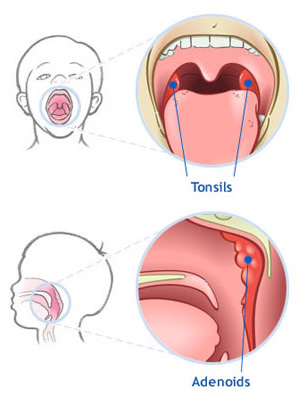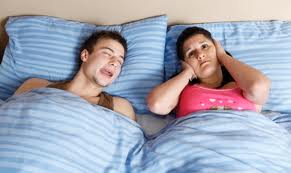Does your wife or roommate complain that you snore very loudly when you are sleeping? Or do you know anyone who does and always wonder why? Snoring can be a very embarrassing habit that cannot be controlled because it occurs when one sleeps. Well, while snoring is known to be very common especially among people who are on the heavy-weight side, it is a medical sleep disorder which occurs in normal-size people as well. So, let us have a bit of understanding about what is snoring and also something termed “obstructive sleep apneaâ€.
What is snoring?
Snoring is the noisy breathing one makes during sleep. It creates a low pitched sound which is created in the upper larynx known as stertor. This noise is created during inhalation by the vibrations of different parts in the back of the throat which include the base of tongue, uvula, soft palate and some other soft tissues. When the airway is narrowed over these parts, the resistance of the airflow during inhalation causes the phenomenon of snoring.
What is obstructive sleep apnea?

The word “apnea†means absence. Obstructive sleep apnea refers to absence of breathing during sleep for 10 seconds or longer. It is a disorder that is caused by repetitive collapse of the upper airway which results in low oxygen levels and also elevated blood pressure. In severe cases, patients may even stop breathing as often as once every minute over one night. This disorder is diagnosed clinically and also using a nasoendoscope by the physician. Usually, patients who have obstructive sleep apnea will encounter symptoms that are associated with the consequence of inadequate sleep listed below.

Signs and symptoms of obstructive sleep apnea
Daytime when awake
- Sleepiness
- Feeling tired during work
- Poor concentration
- Poor memory
- Increased irritability
- Headaches especially in the morning
- Mood swings
At night during sleep
- Gasping for air during sleep
- Choking sensation
- Frequent awakening from sleep
- Increased frequency of passing urine
- Loud snoring
My child snores too, why is it happening? Can it be cured?
It is also a common phenomenon that children snore during their sleep. Children who are having snoring problem are suggestive of obstructive sleep apnea as well. The main causes children snoring may be due to nose block enlarged tonsils or adenoids.

These causes could be due to feeding before bed time resulting in reflux of gastric content back up into the esophagus and subsequently to the throat. When the reflux acid reaches the upper airway, inflammation of the adenoids and tonsils develops thus causing these tissues to swell. Ultimately the swelling of the adenoids and/or the tonsils results in narrowing of the upper airway and when they breathe during sleep at night, the increased resistance of the airway during inhalation creates stertor, i.e. snoring.
When children suffer from obstructive sleep apnea, they have insufficient oxygen during sleep because they cannot breathe normally when they sleep.

Hence, the consequence of it includes short attention spans and poor performance in school, behavioral disorders and poor memory.
Having said, obstructive sleep apnea in children is curable.
How do I know if I have obstructive sleep apnea?
Firstly, if you do not have other health issue but you are facing symptoms that are as mentioned above, and/or your partner often complains and grumble about your sleep habit of snoring that is affecting them, you are advised go to a sleep specialist or an otorhinolaryngologist (ear, nose and throat specialist) for consultation.
Overnight Monitoring
This is a type of clinical investigation which uses certain devices to monitor your sleep pattern, including:
- WatchPAT™ Sleep Test –
 this is a portable device that is worn when one goes to bed and taken off the next day during after waking up. It detects the arterial pulsatile tone from the finger to measure the peripheral arterial tone which reflects upon the autonomic nervous system. The respiratory disturbances that occur during sleep cause changes in the measurement.
this is a portable device that is worn when one goes to bed and taken off the next day during after waking up. It detects the arterial pulsatile tone from the finger to measure the peripheral arterial tone which reflects upon the autonomic nervous system. The respiratory disturbances that occur during sleep cause changes in the measurement. - Monitoring of blood pressure overnight – an automatic electronic blood pressure measuring machine is cuffed onto the patient’s arm and its blood pressure is recorded overnight over a constant period.
- Full polysomnogram –
this tests the eye movements during sleep, the brain, i.e. electroencephalography (EEG), the heart, i.e. electrocardiography, and the activity of the muscles during sleep, i.e. electromyography (EMG).
Nasolarnyngoendoscopy
This flexible endoscope allows the physician to look into the pharynx and also deeper, which is the larynx. Thus, the physician is able to assess the base of the tongue, the tonsils and adenoids, especially in children; and in adults, to see if the soft palate and base of tongue are thicken or enlarged.

